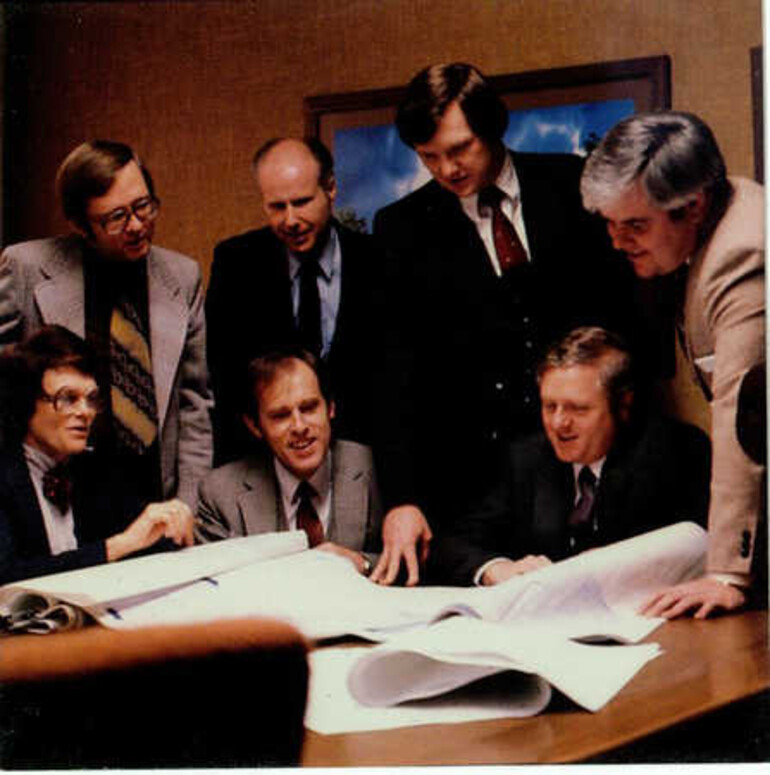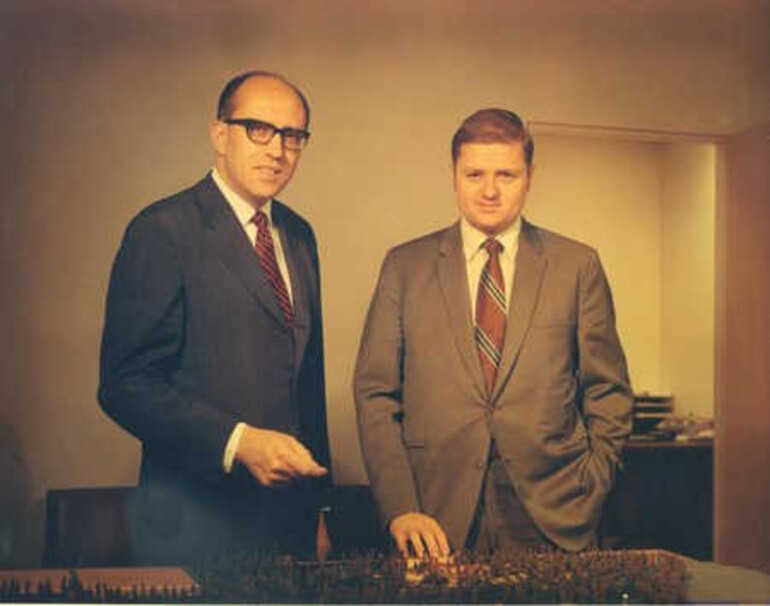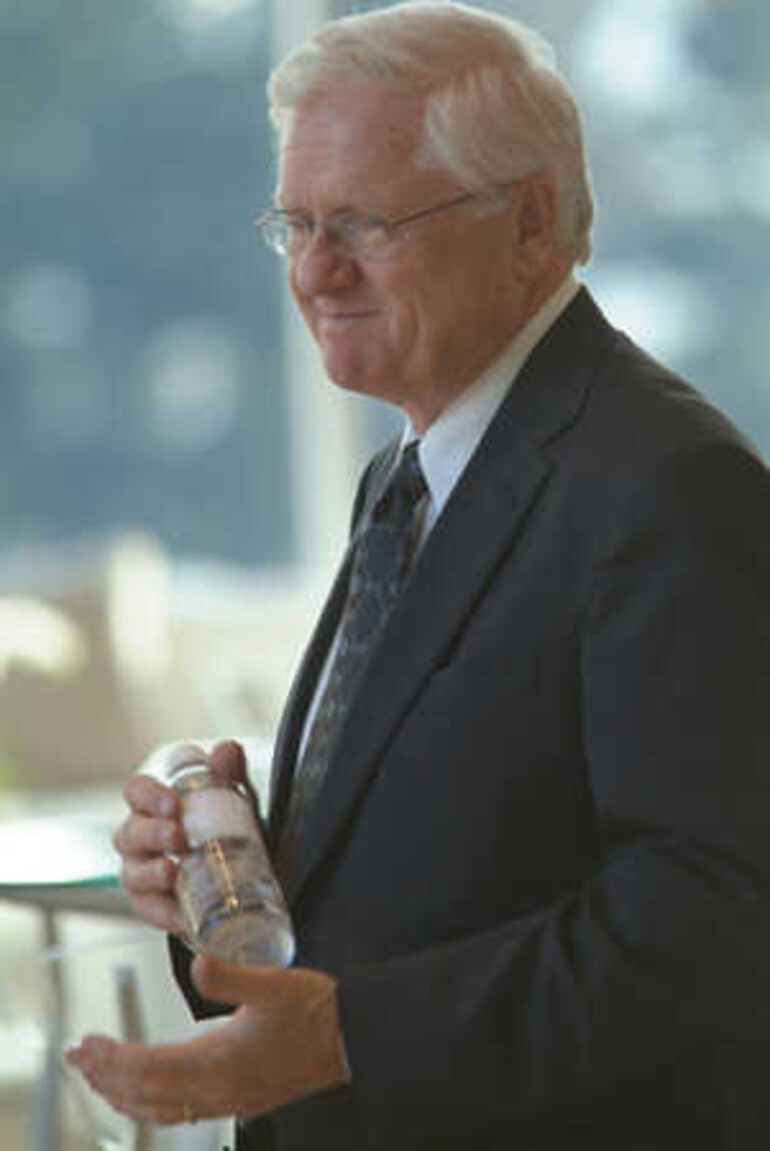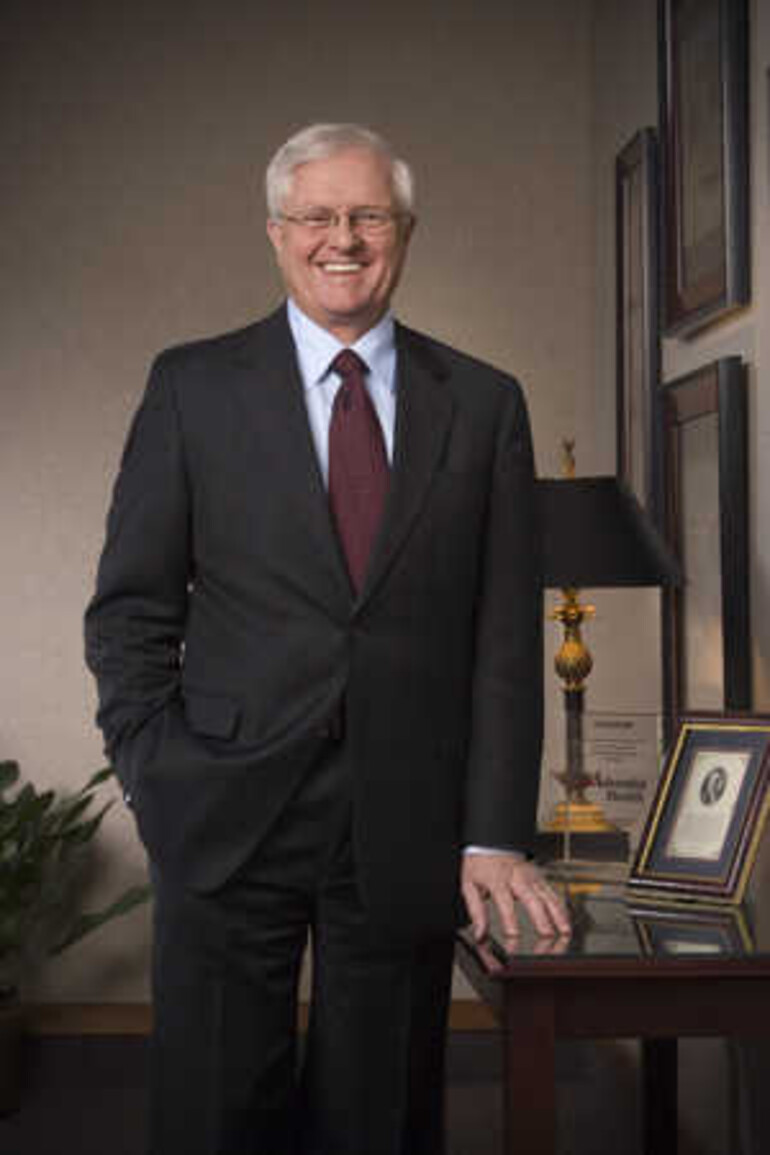After graduating from Walla Walla College, Don and Sharon Ammon left the rural splendor of Washington state and headed east—east into the thriving metropolis of Chicago, such as it was in 1964.
Laying the Foundation
Starting his career at Hinsdale Hospital, Ammon used his business background to direct housing and recruitment, while Sharon began her teaching career at Hinsdale Junior Academy. Soon, the couple had two young children, Kathryn and Jonathan.
During this time, he also earned an M.B.A. from Andrews University.
Reflecting on his Hinsdale experience, Ammon recalled, laughing, "For two people who grew up in rural Eastern Washington, Chicago was quite an adjustment." But the community hospital experience gave him a good platform to build upon, and in the summer of 1967, the Ammons returned to the Northwest.
Becoming a Leader
Moving west meant working at Portland Sanitarium, now called Adventist Medical Center (AMC). "I started as an assistant administrator. Then the next summer, the hospital administrator went to Europe for six weeks, leaving me in charge."
Soon, Walt Blehm, board chairman of the facility and president of the Oregon Conference at the time, recruited Mardian Blair—also from Hinsdale—to be the hospital president.
"Mardian mentored me," said Ammon. "And gave me many opportunities."
One was helping to establish a new campus. "I carried major responsibility for a project of huge proportions—a chance to build a new hospital—a very rare opportunity for anyone," said Ammon, then 30-something.
With the support of Blair and Blehm, Ammon and the Portland team worked on the new hospital throughout the late sixties and mid-seventies. The complicated plan involved moving the original hillside sanitarium two miles to a location with better access and more facilities.
"By relocating the campus along the I-205 corridor, we reached out to more people in our surrounding community," Ammon said. And what began as a dream and major building project resulted in today's award-winning facility in a prime Portland location.
Creating Lasting Leadership
Ammon moved up the ranks at AMC, serving in various capacities until being named CEO in 1977 and president/CEO in 1979. Throughout this tenure, he not only built new facilities; he built leadership. In addition to bolstering the medical staff and recruiting new specialties, Ammon created a long-lasting leadership team. In fact, many of the professionals he recruited still work in Adventist Health today.
With the support of that team, Ammon moved to Roseville, California, in the summer of 1983 to lead yet another building project—constructing the Adventist Health corporate office.
Prior to consolidation, Adventist hospitals on the West Coast were first managed by local conferences and then by the North Pacific and Pacific Union Conferences, which created the Northwest Medical Foundation and Pacific Union Adventist Health Services, respectively. The goal was to centralize the operations of their health care institutions. When those entities joined forces in 1980 to form what is now known as Adventist Health, a new location was needed for the headquarters. Ammon, then executive vice president, led the charge.
"I worked very closely with the executive team, especially our president, Frank Dupper," said Ammon. "Frank was a great person to work with for 18 years. He provided mentoring and support for my professional growth."
"We eventually chose Roseville because it was centrally located to all of our hospitals and at the time, the cost of living was inexpensive," he added.
While Roseville has grown to be more than fields and pastures, Adventist Health still maintains its original building on Douglas Boulevard, where corporate departments support nearly 200 business units throughout the West Coast.
Expanding the Portfolio
While working from the corporate office during the last two decades, Ammon oversaw the growth of the corporation. What began as a collection of hospitals has become a diversified health care system with home health care agencies, rural health clinics and joint-venture retirement centers.
"I've enjoyed the growth and development of our facilities, particularly with our quality initiatives and technological innovations," said Ammon.
One such innovation has been the implementation of Project IntelliCare, Adventist Health's clinical information system. "This project will help us achieve our goal of a completely electronic medical record and will help us deliver the safest, highest quality care possible."
Making Connections
A major aspect of Ammon's success has been building relationships throughout the health care industry, the political arena and the Seventh-day Adventist Church.
"Working with our hospital leadership teams has been especially rewarding," said Ammon, who in the course of his career has chaired nearly all of the hospital boards of directors.
"I had the opportunity to connect with employees, medical staff and administration. It was gratifying to bring parties together for positive outcomes," he added.
After 28 years as a board member of the North Pacific Union Conference (NPUC) and many years on the Pacific Union Conference (PUC) board, Ammon stated, "It has been very fulfilling to be involved in church leadership." Tom Mostert, Pacific Union president, has served as Adventist Health Board Chairman for 21 years and Jere Patzer, North Pacific Union president, as vice chair for more than a decade. "The support, guidance and friendship of these leaders has been invaluable," acknowledged Ammon.
In addition to hospital and church affiliations, Ammon also represented Adventist Health on the boards of many other companies, including Loma Linda University Adventist Health Sciences Center, Blue Cross of Oregon and Premier. Ammon also served on the board of the California Hospital Association, progressing through several roles, culminating in the prestigious board chairmanship in 2005.
Building Through Mission
Although Ammon has logged thousands of hours on projects, diversified Adventist Health's holdings and promoted the implementation of a multi-million dollar clinical information system, one accomplishment stands out above all others: making the mission of Adventist Health a priority throughout the corporation.
Not just another corporate tag line, Adventist Health believes in its mission of sharing God's love by providing physical, mental and spiritual healing. To foster that mission, Ammon was instrumental in creating the Mission and Planning department when he became president in 1999.
"Making our mission visible was a priority for me," said Ammon. "From our board, senior management and hospital leadership, we have absolute commitment to the mission, faith and heritage of Adventist health care."
"Qualified people committed to that healing philosophy makes our success possible," he added.
As his 43-year career comes to a close, Ammon reflects on his past and ponders the future, "It's hard to know what the Lord's plan is, but the Lord is definitely in charge at Adventist Health."











